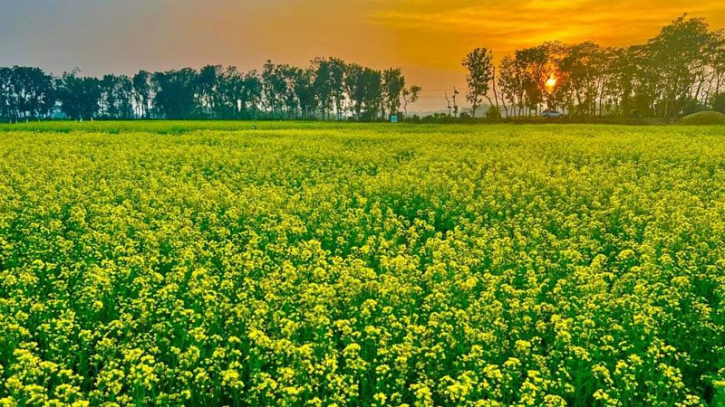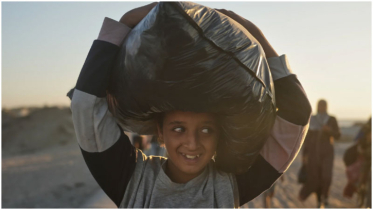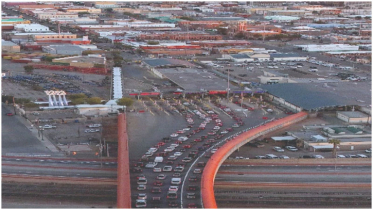The real comparative advantage of Bangladesh

What gives Bangladesh an edge? The overwhelming consensus among experts and media professionals is that cheap labour is Bangladesh's primary comparative advantage. Cheap labour has driven the phenomenal growth of the ready-made garment (RMG) industry in Bangladesh, provided employment for millions of female workers, and earned the country billions in foreign exchange. However, low wages are essentially synonymous with poverty. And after 40 years of manufacturing cheaply, is this still a desirable trait?
Growth based on cheap labour is neither desirable nor stable. Eventually, another country with even lower wages could supersede Bangladesh's RMG industry. In fact, if not for its civil war, Sri Lanka might have been the top choice for RMG production globally instead of Bangladesh. Historically, textile manufacturing moved from Britain to cost-competitive Japan, and later Japan lost its market to lower-cost countries like China, Bangladesh, and Vietnam. As labour costs rise, labour-intensive manufacturing shifts to cheaper countries, and Bangladesh is not immune to this reality.
Technological advancements and rising protectionism threaten cheap labour's comparative advantage. A 2019 McKinsey report showed that trade reliant on labour-cost differences is declining notably in labour-intensive manufacturing, wherein the share of such trade dropped from 55 percent in 2005 to 43 percent in 2017. Automation and artificial intelligence will likely accelerate this shift towards capital-focused manufacturing. This raises the question: what will be Bangladesh's development pathway as its labour cost advantages diminish?
Bangladesh's primary comparative advantage is actually its fertility—a gift of nature. Annually, over 50 rivers from India flow into Bangladesh, carrying an astonishing 650 billion cubic metres of water and depositing fertile silt to form a massive river delta. In the words of Willem van Schendel, "Bangladesh is the Himalayas, flattened out." Unless India diverts the waters, this remains a major advantage for Bangladesh. How can Bangladesh utilise this permanent comparative advantage?
Hitherto, nature's bounty to Bangladesh has been needed just to provide enough rice to feed its population of 170 million—and growing. Will using the land for income generation mean starving someone? Both demand and supply considerations state otherwise. Wealthier people consume less rice. For example, after peaking in 1962, Japan's per capita rice consumption more than halved as wealth increased, dropping from 118kg to 50.8kg in 2020. If Bangladesh's rice demand mirrors Japan's, up to half of the land can be freed for high-value, non-traditional agriculture. Recent data has shown a 10 percent drop in Bangladesh's per capita rice consumption between 2016 and 2022. If the country's economic growth had been more evenly distributed, the decrease in rice consumption would have happened even faster.
With Bangladesh's population projected to exceed 200 million by 2050, simply relying on lower rice consumption per head is precarious. Increasing domestic rice production is vital to ensuring a stable supply. Fortunately, there is considerable potential for increasing supply, thanks to a significant gap between the potential and actual yields of rice. Bangladesh's rice productivity growth, currently at just one percent, lags behind India's 2.4 percent, Thailand and Vietnam's 1.9 percent, and China's 3.7 percent. Modernisation and optimisation could boost yields and reduce the demand for land devoted to rice cultivation. With due care, Bangladesh could even become a rice exporter, a potential that first emerged way back in 1991.
Due to the horizontal expansion of homesteads, Bangladesh loses about 0.2 percent to one percent of its agricultural land annually. Making more profitable use of the land will automatically induce people to conserve land and make the shift to compact, multi-level homes.
When this happens we will first see that, as the use of land becomes more lucrative, the value of agricultural land will rise. Consequently, individuals will think twice before constructing new homes on profitable agricultural land. This shift will naturally create pressure to build homes vertically, conserving land and enabling residents to live closer to amenities such as electricity and water. Rural landlords and farmers will both benefit from the higher land values, positively impacting rural areas overall. Secondly, Bangladeshi farmers may well eye the global rice market. Being paid in dollars will drive maximum effort and productivity on rice farms, paving the way for sustained long-term growth.
Global challenges such as climate change further highlight the need for agricultural diversification. Heavy reliance on monocropping with rice or wheat is fraught with risks—from plant pandemics to the devastating impacts of climate change, as evidenced by the 2022 floods in Pakistan which destroyed 15 percent of the country's rice harvest. For Bangladesh, diversifying into climate-resilient, high-value non-traditional agriculture will not only increase income but will also reduce risks and address local food security.
The move towards cash crops such as fruits and vegetables appears both desirable and inevitable. Crop diversification and agro-processing have proven to be effective ways to secure rural agricultural livelihoods, promote faster growth, and reduce rural poverty. Beyond diversifying exports away from RMG, this strategy involves leveraging Bangladesh's warm climate and fertile land to meet the year-round demands of Western consumers. The aim should extend beyond earning foreign currency and include protecting against the unpredictable threats posed by climate change.
Unlike RMG, Bangladesh's fertile arable land is an enduring asset that is barely susceptible to competition. Bangladesh must increase production on its diminishing fertile land as improved land use could yield significant rewards for the country. The middle-income trap has emerged as the newest catchphrase in the context of Bangladesh. Whether it is a reality or not, or how we can escape it, remains without consensus. Either way, the solution may be a return to high-value agriculture, leveraging Bangladesh's lasting comparative advantage.
Writer: Syed Abul Basher, professor of economics at East West University and Salim Rashid, professor emeritus at the University of Illinois at Urbana-Champaign.
Source: The Daily Star.
.png)




